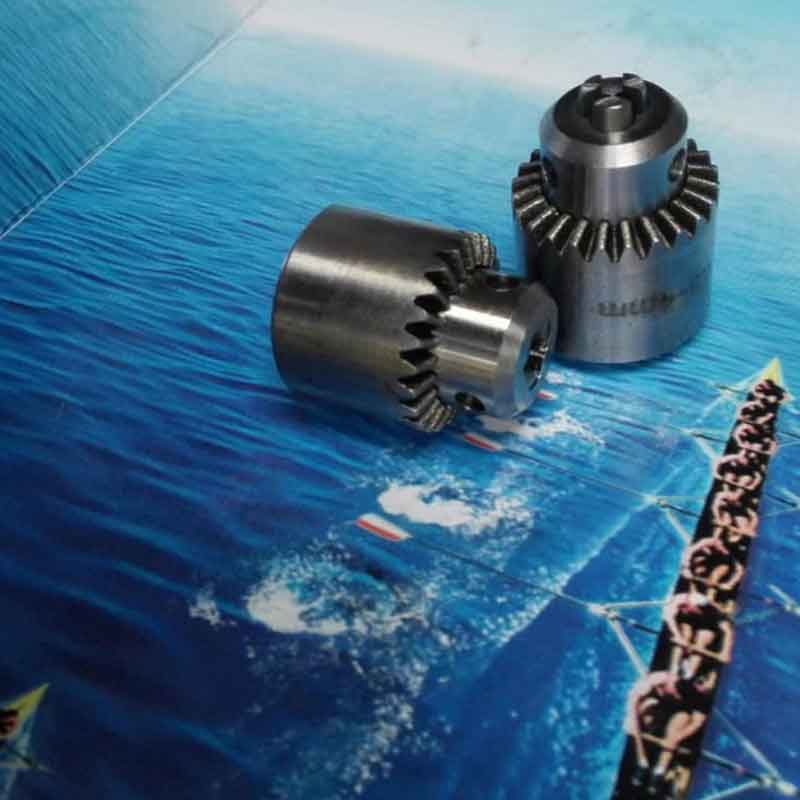When processing a CNC lathe, the datum used to determine the correct position of the workpiece on the machine tool or fixture is called the positioning datum; if the unprocessed blank surface is used as the positioning datum, the datum is called a rough datum. Datum; if it is a machined surface, it is called a fine datum.
1. Selection of rough benchmark
The surface used as a rough reference should ensure that all processed surfaces have sufficient machining allowance, and each processed surface should have a certain positional accuracy with respect to the unprocessed surface. The selection principles are as follows:
1) Select a surface that does not require processing as a rough reference
If there are several surfaces on the workpiece that do not need to be processed, the unprocessed surface with higher mutual position accuracy requirements with the processed surface should be selected as a rough reference to ensure that the mutual position error between the processed surface and the non-processed surface on the workpiece is minimized.
For example, the unprocessed outer cylindrical surface of the workpiece is used as a rough reference. This can ensure a high coaxiality or perpendicularity between each machined surface and the outer cylindrical surface, and most of the parts that need to be processed can be processed in one installation. s surface.
2) Select the surface with the smallest machining allowance and tolerance as the rough reference

If all surfaces of the workpiece need to be machined, this selection ensures that the surface machining allowance used as a rough reference is uniform. For example, the CNC lathe bed requires good wear resistance on the guide rail surface. It is hoped that only a thin and uniform layer of metal is removed during processing, so that the surface layer retains a uniform metallographic structure and high hardness. This can be achieved by first selecting the guide rail surface as a rough datum, processing the bottom plane of the bed leg, and then using the bottom plane of the bed leg as a fine datum to process the guide rail surface.
3) Select a surface that is smooth, flat, large enough, and stable for clamping as a rough reference
The rough datum should not have gates, risers, flash, burrs and other defects, otherwise the positioning datum will be inaccurate and the clamping will not be reliable.
4) Coarse datum can generally only be used once
The rough reference has low accuracy and large roughness. If it is used repeatedly, the positioning error will be large, which will cause large position errors on the processing surface.
2. Selection of precise benchmarks
After the first process, precise datum positioning should be used. The selection principles are as follows:
1) Principle of benchmark coincidence
Use the design datum as the positioning datum as much as possible. This can avoid positioning errors caused by the misalignment of the positioning datum and the design datum, and easily ensure the relative position accuracy of the processing surface and its design datum.
For example, when processing the outer circle and tooth shape of holed gears and sleeve workpieces, a mandrel is inserted into the processed hole for positioning. This allows the positioning datum to coincide with the assembly datum and design datum to improve processing accuracy.
2) Benchmark unification principle
A positioning datum should be used for processing as many surfaces as possible, which will help ensure the position accuracy of each processed surface. In addition, the positioning and clamping devices of fixtures used in many processes can be made the same or similar, reducing the time and cost of designing and manufacturing fixtures. For example, when processing shaft workpieces, many processing surfaces and processes use apex as a positioning datum. Another example is when processing the outer circle, end face and tooth shape of gears, the inner hole is used as a precise reference position.
3) Choose a surface with a larger area, higher precision, and stable and reliable installation as a reference for fineness.
The selected precision datum should make the fixture structure simple and facilitate the clamping and processing of the workpiece.
4) Self-centered
For some finishing or finishing processes, when the machining allowance is required to be small and uniform, the machined surface itself can be used as a fine reference positioning. For example, when grinding the guide rail surface of the machine bed, the guide rail surface itself (precision reference) is used for alignment and positioning. The position accuracy of the guide rail surface itself should be guaranteed by the previous process. In addition, such as floating boring tool boring, floating reamer reaming, broaching, honing holes, centerless grinder grinding cylindrical grinding, etc., all use self-based standards.
5) Benchmark each other
In order to obtain uniform machining allowance or high position accuracy, the principle of mutual reference and repeated processing can be adopted. For example, the coaxiality of the spindle journal and the tapered hole is very demanding, and they are processed repeatedly using the principle of mutual reference during production.



